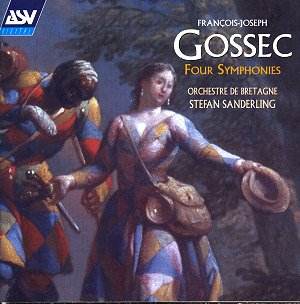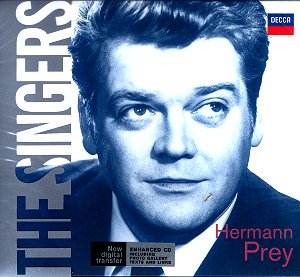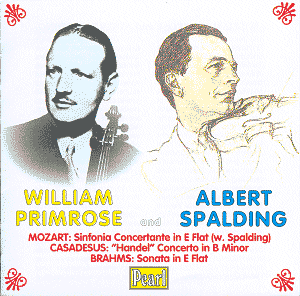 Composer: François-Joseph Gossec
Composer: François-Joseph Gossec
Works: Four Symphonies – Symphony in C, Brook 85; Symphony No 1 in B flat, Brook 81; Symphony in C, Brook 87; Symphony in D “La caccia”, Brook 62
Performers: Orchestre de Bretagne, Stefan Sanderling (conductor)
Recording: Recorded Rehearsal Hall, Rennes, July 2000
Label: ASV CD DCA 1123
Francois-Joseph Gossec emerges as a pivotal figure in the development of the symphonic form during the latter half of the eighteenth century, particularly within the French milieu. His symphonies, numbering around fifty, reflect a remarkable blend of Italianate lyricism and the structural clarity derived from the Mannheim school, presenting an intriguing departure from distinctly Gallic characteristics. This recording of four symphonies by the Orchestre de Bretagne under Stefan Sanderling illuminates Gossec’s thematic inventiveness and orchestral finesse while contextualizing his work within the broader evolution of the symphonic repertoire.
The Symphony in C, Brook 85, opens with a grand, rhetorical gesture that sets a high bar for the ensuing movements. Sanderling’s interpretation captures the initial grandeur well, emphasizing the dramatic dynamic shifts that are a hallmark of Gossec’s style. However, as the symphony progresses, the subsequent movements, while attractive, often lack the thematic depth or coherence to sustain the listener’s engagement beyond mere decorative appeal. The Larghetto Siciliana from the Symphony No 1 in B flat showcases Gossec’s lyrical gifts, employing flowing Italianate melodies over a pizzicato backdrop that, while charming, does not quite achieve the symphonic gravitas one might hope for.
In the Symphony in C, Brook 87, a more concentrated effort emerges, particularly in the imaginative Minuetto and Trio, where Sanderling deftly thins the texture to single voices, allowing the melodic lines to breathe. The finale, with its Mannheim crescendos and drones, provides a compelling contrast that underscores the symphony’s structural ingenuity. This work stands out not only for its clever orchestration but also for the way it invites comparison to contemporaries such as J.C. Bach, who similarly navigated the balance between structural rigor and lyrical expression.
The technical execution of the Orchestre de Bretagne is commendable throughout the recording. Sanderling’s direction ensures clarity and precision, with the ensemble’s blend of tonal colors effectively illuminating Gossec’s orchestral palette. The engineering quality of the recording is equally noteworthy; the sound is crisp and well-defined, with a natural balance that allows individual instrumental lines to emerge without muddiness. This clarity is particularly beneficial in the intricate passages, where the interplay of strings and woodwinds can easily become lost if not properly captured.
While Matthias Bamert’s recordings with the London Mozart Players offer an alternative perspective on Gossec’s oeuvre, Sanderling’s interpretation stands as a fresh and affectionate exploration of these symphonic works. The nuanced approach to dynamics and articulation reveals layers within Gossec’s music that may otherwise remain obscured, making this disc a valuable addition to the repertoire of late eighteenth-century symphonic literature.
The performance and interpretation on this recording resonate with scholarly insight while remaining engaging for the listener. Sanderling and his orchestra bring a warmth and vitality to Gossec’s symphonies, revealing both their historical context and enduring charm. The Symphony in C, in particular, emerges as a significant work worthy of further exploration within the canon, serving as a testament to Gossec’s role in shaping the symphonic landscape of his time.



